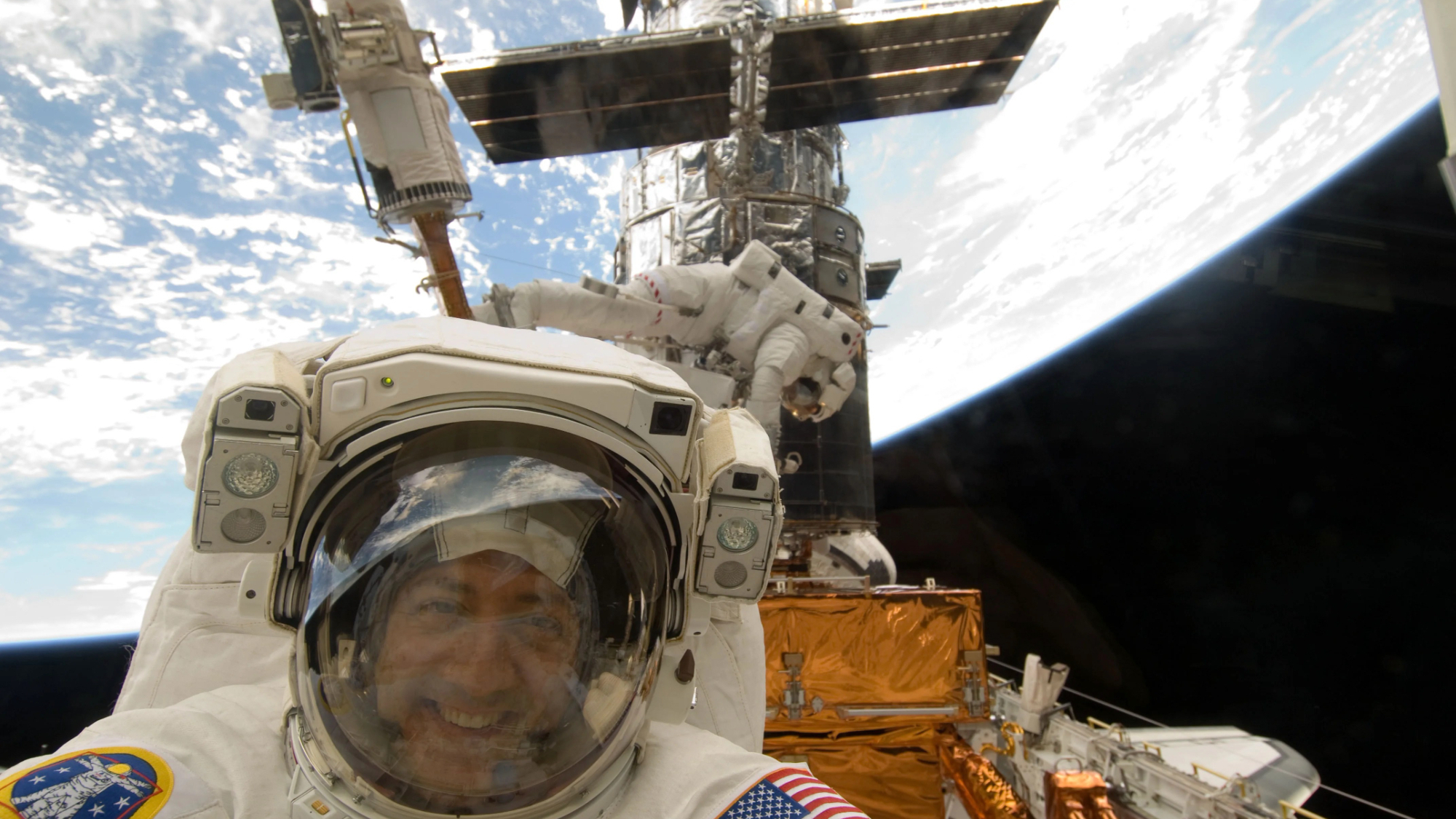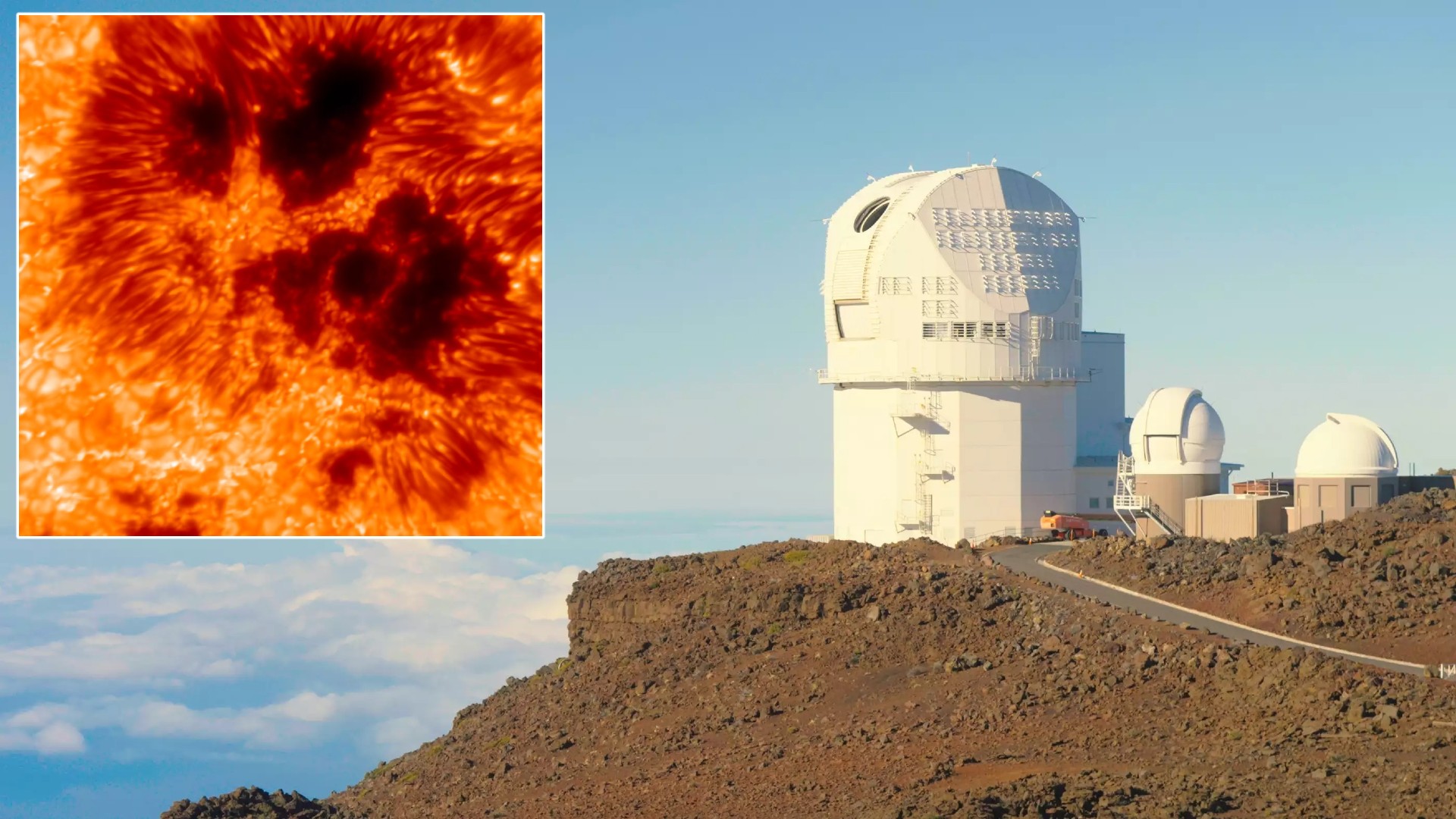
This story was updated at 11 a.m. ET.
MOFFETT FIELD, Calif. — At first it seemed like rain would spoil everything. But despite early threats of foul weather, the clouds parted right on time and 8-year-old Alexandra Chin — along with hundreds of other skywatchers — took a long, deep look at the moon on Saturday (Sept. 18).
"It looks even closer when you get to see the craters," Alexandra said.
Chin and her family were just a few of the 500 people who turned out here at NASA's Ames Research Center to peer through telescopes, picnic on the grass and listen to talks about the moon during the first International Observe the Moon Night, a global skywatching event to spur public interest in the moon with almost 400 venues scheduled in 30 different countries.
"This is fantastic," said Sandra Chin, Alexandra's mother. She had brought her three children to the Ames center from nearby Foster City to see the moon. "The kids are amazed. They're very surprised that they can see planets, not just the moon."
Alexandra and her siblings observed the moon through one of the 25 or so telescopes set up by amateur astronomers on a big patch of grass.
At Ames, in the heart of Silicon Valley, clouds hung around for much of the afternoon, threatening to cast a pall over the moon and the event. But the sky cleared around dusk, yielding brilliant views of the moon, Jupiter and Venus that were only occasionally spoiled by a white Farmers Insurance blimp cruising overhead.
Get the Space.com Newsletter
Breaking space news, the latest updates on rocket launches, skywatching events and more!
The event's organizers were pleased with the turnout, especially since weather forecasts all week had predicted rain.
"Our local amateur astronomers came out, the public came out," said Brian Day, education and public outreach lead for NASA's Lunar Atmosphere and Dust Environment Explorer mission. "It really shows the level of interest here in the community."
The moon also did not disappoint skywatchers overseas. In the United Kingdom, Andrew Brown of Ashford, Kent, ventured outside, camera in hand, to gaze at the moon. [Moon photo by Andrew Brown]
"I was on my own, but still wanted to participate and [was] pleased the weather did cooperate," Brown said in an e-mail. "It is expected that rain will be arriving soon here."
Moon-watchers' delight
As darkness fell at Ames, skywatchers lined up at the telescopes, forming lines that in some cases were 40 people deep.
After children took their turn at the eyepiece, many ran about on the grass, blowing the whistle keychains that event organizers had handed out. The high-pitched din from hundreds of whistles, peeping intermittently but incessantly, sounded like a tree frog mating chorus, or an unhappy crowd at a European soccer match.
Those eager for some harder science wandered over to a floodlit patch of grass away from the telescopes, where researchers discussed recent discoveries about the moon. The speakers were David Morrison, former director of NASA's Lunar Science Institute; Barry Blumberg, a Nobel laureate and former director of the NASA Astrobiology Institute; and Greg Delory, deputy project scientist of the LADEE mission. [10 Coolest New Moon Discoveries]
Dozens of people listened intently, though they sometimes had to strain to hear the scientists above the shrieking of whistles.
A lunar night out
The Ames Research Center was one of three NASA space centers that welcomed moon-watchers for the night of lunar appreciation in addition to the other events. NASA's Marshall Space Flight Center in Huntsville, Ala., and the Goddard Space Flight Center in Greenbelt, Md., also opened their doors.
"Everyone is getting a great look at the moon tonight," said Rob Suggs, manager of the Lunar Impact Monitoring Project at the Marshall Center. "I think for sure we'd like to do this again."
More than 250 people turned out to the U.S. Space & Rocket Center near the Marshall Space Flight Center to drink in views of the moon and listen to scientists discuss the latest lunar discoveries, such as the results from NASA's Lunar Reconnaissance Orbiter and others.
With a clear sky overhead, skywatchers got a clear view of the moon's famed Tycho crater and its tendrils of ray-like features, as well as Plato and Copernicus craters, Suggs told SPACE.com. NASA scientists also focused telescopes on the moon's terminator — the border between the illuminated and darkened parts of the moon as seen from Earth.
"A lot of people were surprised at how rough the terminator is because of the topography of the moon," said Barbara Cohen, a lunar scientist at Marshall, in an interview. "It's not like a smooth billiard ball."
At the Goddard Space Flight Center in Maryland, attendees got a chance to watch scientists fire lasers at the moon as part of an ongoing work to determine the precise location of the Lunar Reconnaissance Orbiter. Photos from the event showed visitors peering through telescopes, using touch displays to see pictures of the lunar surface and holding moon rocks.
The moon's appeal appears to have been growing lately among scientists and the public after a series of new international missions from the Japan, China, India and the United States.
"It seems to me that the moon is more of an international place," Suggs said. "It is not just for the U.S. or Russia. It's for everyone."
SPACE.com Managing Editor Tariq Malik contributed to this report from New York City.
Join our Space Forums to keep talking space on the latest missions, night sky and more! And if you have a news tip, correction or comment, let us know at: community@space.com.

Michael Wall is a Senior Space Writer with Space.com and joined the team in 2010. He primarily covers exoplanets, spaceflight and military space, but has been known to dabble in the space art beat. His book about the search for alien life, "Out There," was published on Nov. 13, 2018. Before becoming a science writer, Michael worked as a herpetologist and wildlife biologist. He has a Ph.D. in evolutionary biology from the University of Sydney, Australia, a bachelor's degree from the University of Arizona, and a graduate certificate in science writing from the University of California, Santa Cruz. To find out what his latest project is, you can follow Michael on Twitter.









